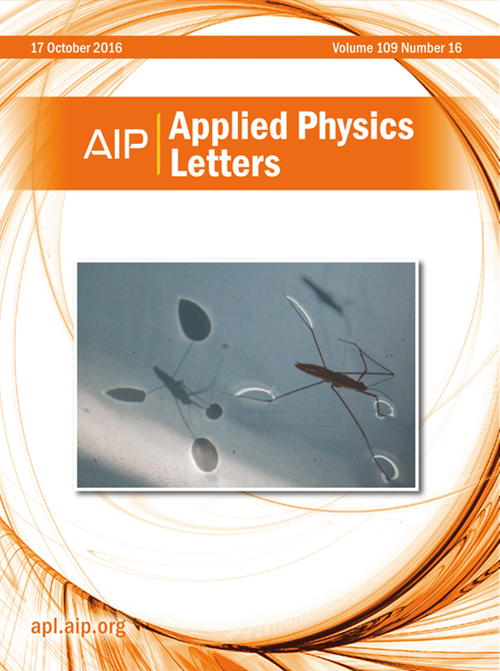BaF2纳米颗粒的缺陷相关发光用于植物细胞成像
IF 3.5
2区 物理与天体物理
Q2 PHYSICS, APPLIED
引用次数: 0
摘要
具有发光缺陷的材料作为能量陷阱和发光中心,具有发射光谱可调和合成工艺成本低的优点,可用于生物成像应用。在本文中,我们对小尺寸(<;30 nm) BaF2纳米颗粒(NPs),并探索其在植物细胞成像中的应用。采用溶剂热法合成了形态均匀的BaF2纳米粒子。光致发光(PL)研究表明,这些NPs在UV-Vis区域的宽激发波长范围内表现出广泛和缺陷相关的发光,具有高发光效率,优异的光学稳定性和可逆的温度依赖性。利用4f结构二维激光扫描光学系统,在不同波长的连续波激光激发下,对BaF2 NPs培养的洋葱表皮细胞进行了原型荧光成像实验。扫描的荧光图像准确地再现了细胞结构,强调了所制备的NPs独特的目标特异性和高生物相容性,使其成为荧光探针在生物应用中的竞争候选人。本文章由计算机程序翻译,如有差异,请以英文原文为准。
Defect-related luminescence in BaF2 nanoparticles for plant cell imaging
Materials with luminescent defects, serving as energy traps and luminescence centers, exhibit the advantages of tunable emission spectra and cost-effective synthesis processes and can be used for biological imaging applications. In this paper, we present an experimental investigation into the defect-related luminescence of small-sized (< 30 nm) BaF2 nanoparticles (NPs) and explore their application in plant cell imaging. Uniformly morphological BaF2 NPs are synthesized via the solvothermal method. Photoluminescence (PL) studies have demonstrated that these NPs exhibit broad and defect-related luminescence across a wide range of excitation wavelength in the UV-Vis region, characterized by high luminescent efficiency, excellent optical stability, and reversible temperature dependence. Utilizing a 4F-configuration two-dimensional (2D) laser-scan optical system, a prototype fluorescence imaging experiment is conducted on onion epidermal cells incubated with BaF2 NPs under continuous-wave (cw) laser excitation at varying wavelengths. The scanned fluorescence images, which accurately reproduced the cell structures, underscore the unique target specificity and high biocompatibility of the prepared NPs, positioning them as a competitive candidate for fluorescence probes in biological applications.
求助全文
通过发布文献求助,成功后即可免费获取论文全文。
去求助
来源期刊

Applied Physics Letters
物理-物理:应用
CiteScore
6.40
自引率
10.00%
发文量
1821
审稿时长
1.6 months
期刊介绍:
Applied Physics Letters (APL) features concise, up-to-date reports on significant new findings in applied physics. Emphasizing rapid dissemination of key data and new physical insights, APL offers prompt publication of new experimental and theoretical papers reporting applications of physics phenomena to all branches of science, engineering, and modern technology.
In addition to regular articles, the journal also publishes invited Fast Track, Perspectives, and in-depth Editorials which report on cutting-edge areas in applied physics.
APL Perspectives are forward-looking invited letters which highlight recent developments or discoveries. Emphasis is placed on very recent developments, potentially disruptive technologies, open questions and possible solutions. They also include a mini-roadmap detailing where the community should direct efforts in order for the phenomena to be viable for application and the challenges associated with meeting that performance threshold. Perspectives are characterized by personal viewpoints and opinions of recognized experts in the field.
Fast Track articles are invited original research articles that report results that are particularly novel and important or provide a significant advancement in an emerging field. Because of the urgency and scientific importance of the work, the peer review process is accelerated. If, during the review process, it becomes apparent that the paper does not meet the Fast Track criterion, it is returned to a normal track.
 求助内容:
求助内容: 应助结果提醒方式:
应助结果提醒方式:


